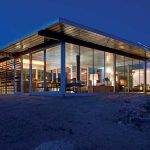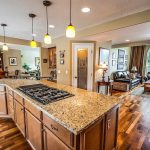Timber soffits
You can consider installing treated and sealed wood and paint it with your preferred colour but it has a limited lifespan in a wet climate. Timber can instead be hardwood or chemically processed softwood (see info below) to provide better water resistance.
Aluminium soffits
Aluminium soffits help to conceal any imperfections wherever installed better than uPVC, partly because of its soft nature. An aluminium soffit has a high durability, especially in the absence of impact damage and comes in a range of colours. It does not chip, crack or rot, it’s non-combustible so in the event of a fire it won’t burn. The low maintenance aspect of this material is appealing; it doesn’t attract dirt easily and is easy to keep clean. In wet or coastal areas cast aluminium is usually recommended instead of standard aluminium, or a proprietary system.
Aluminium soffit costs more than uPVC, something to bear in mind if you have a large area to cover. It is also less effective as an insulator.
Wooden fascias
They will give your building a traditional, solid look and can easily be painted any colour. Available in different types of wood, which can be hardwood such as oak or cedar, treated softwood or engineered, it has the added advantage of not cracking in sunlight. It will however require considerably more upkeep than modern alternatives (see below).
uPVC fascias
Although it’s ultimately down to personal preference, uPVC has some advantages over other materials as its lifespan is estimated to be at least 20 years. Simple wiping is required only occasionally to get rid of dirt and dust. A potential difficulty may be that there are different grades of uPVC available and it can be quite difficult to differentiate between them. Recycled uPVC for instance tends to be of lower quality than virgin. The benefits are:
- Resilient material
- Can sustain weathering longer than wood
- Low maintenance
- Easy to clean and repair
- Gives buildings a more modern look than traditional wooden
- Cost effective
Cladding
In some instances, timber is used as a base for the soffit and/or fascia and is then clad with any of the modern materials. If you wish to do this in a new build make sure it’s installed correctly; good detailing must include ventilation (a gap between the two materials) to prevent condensation. Otherwise the wood will deteriorate at a quicker pace than if it had been left uncovered and you won’t notice until the damage is done.
Masonry overhangs
The fascia especially, as noted above, is directly in the line of fire when bad weather hits, to which, for some situations, the answer might be a masonry roof overhang (see info below). Suitable for all roof types, the blocks can be cut to shape and are available in a range of colours. The masonry weathers with the building, requires no maintenance and has a lifespan equal to that of the house.







